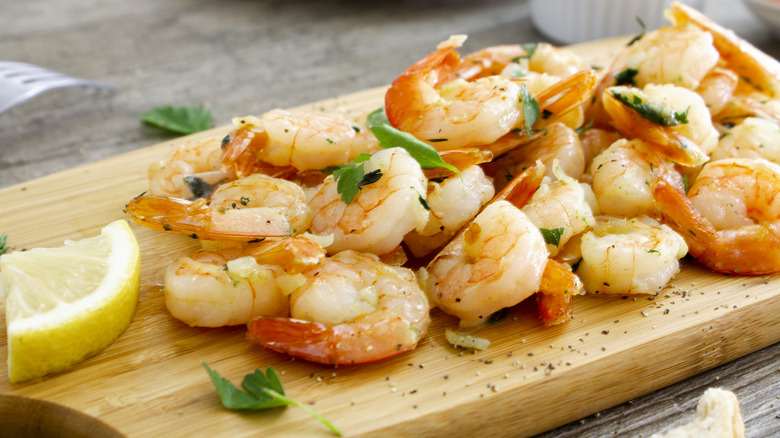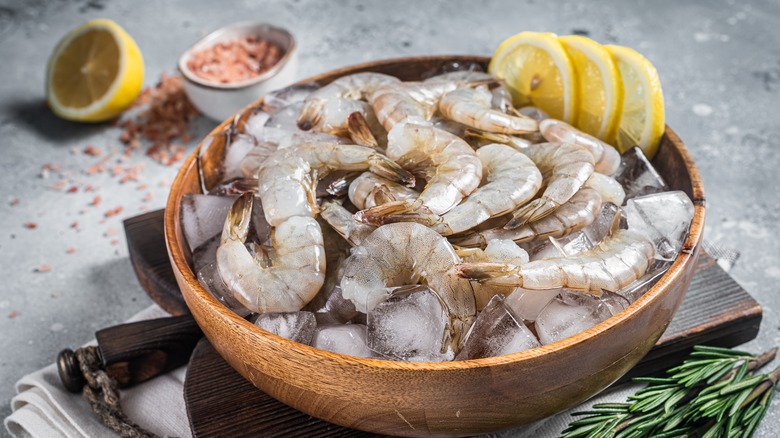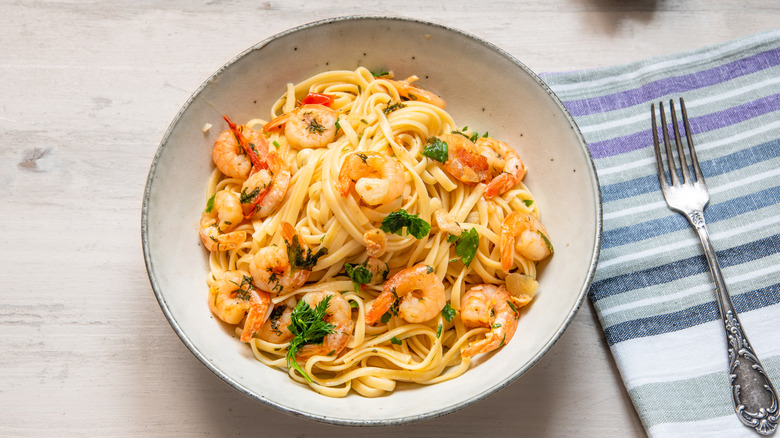Leave The Tails On Shrimp To Avoid A Common Overcooking Error
When you see shrimp cocktail at a party, you instantly get excited to park yourself at the table and dig in rather than talking to people. However, that enthusiasm may dwindle if you bite into a rubber band. The line between buttery and rubbery is a thin one, but there are ways to make sure you stay on the right side of it (and don't ruin the party). For example, you can toss shrimp with baking soda to improve their texture. The alkalinity of baking soda makes shrimp more plump and juicy. Or you can pound shrimp with a rolling pin for perfectly crisp fried shrimp.
One trick is even easier: Leave the tails on your shrimp when you cook them. This will not only help prevent the shrimp from overcooking, but it will make your shrimp look better too. To learn why this works, let's take a closer look at how shrimp are shaped.
The anatomy of a shrimp impacts how it cooks
When cooking protein, it's important to work with an ingredient that is uniformly shaped. This is why cooks tie up roasts or pound chicken breasts into cutlets. Shrimp are always unevenly shaped. The top of a piece of shrimp (the part just below the head) is its thickest point. As you travel down to the bottom, the shrimp gets steadily thinner. This means that the bottom part will naturally overcook before the top part is finished cooking.
The solution to this is simple; all you need to do is leave the shrimp's tail on. The tail will insulate this thin area and prevent the meat from overcooking. Because this area is protected by the shell, it takes longer to cook. This creates the effect of a more uniformly thick piece of shrimp.
Leaving the tail on also has aesthetic purposes. The tail anchors the shrimp and stops it from deforming. If you are sauteing shrimp, this is especially important. Without the tail, a piece of shrimp will curl up when it hits a hot pan. This leads to a final dish that looks less appetizing and uniform.
Fine tuning shrimp at the tail-end
This technique only presents one issue. If you leave the tail on, the diner needs to remove the tail with their hands when eating. This is fine for shrimp preparations that are meant to be eaten by hand. Leaving the tail on fried shrimp or shrimp cocktail gives the eater a convenient handle. It's less convenient when the shrimp is meant to be eaten with a fork or spoon, like in scampi or gumbo.
Fortunately, this too has an easy solution. Simply cook the shrimp with the tail on, let it cool while you prepare the rest of your dish, take the tail off the shrimp, and return them to the dish to heat up before serving.
Let's say you're preparing some simple shrimp congee. Start by cooking your tail-on shrimp, and then remove them from the heat once they're cooked. While you build the rest of the congee, the shrimp will cool to the point that they can be handled. Once they're cool to touch, remove the tails. When you're spooning your rice porridge into a bowl, it's time to add the shrimp back in. Adding it at the very end means that the shrimp will warm up, but not overcook.
And hey, maybe you want to leave the tails on for dinner. It's perfectly safe to eat shrimp tails, after all, and they're packed with healthy nutrients. Maybe it's time to try something new!



